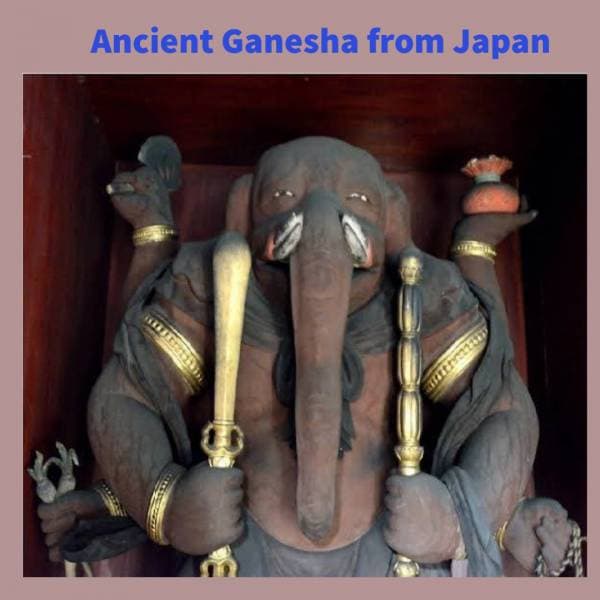Hindu Deities and Sanskrit in Japan
Most people are not aware that numerous Hindu deities are very actively worshipped in Japan. In fact, there are hundreds of shrines to Saraswati alone. There are innumerable representations of Lakshmi, Indra, Brahma, Ganesha, Garuda, and other deities. In fact, deities we have practically forgotten in India, such as Vayu and Varuna are still worshipped in Japan. Sanskrit letters are to be found in practically every home in Japan. The ‘havan’ is conducted in more than 1,200 temples every day in Japan, with Sanskrit chanting. In many ways, Japan has preserved ancient Hindu traditions, even when they may have evolved in India
Most people are not aware that at least a score of Hindu deities is very actively worshipped in Japan. In fact, there are hundreds of shrines to Saraswati alone. There are innumerable representations of Lakshmi, Indra, Brahma, Ganesha, Garuda, and other deities. In fact, even deities that have been practically forgotten in India, such as Vayu and Varuna, are still worshipped in Japan. In many ways, Japan has preserved very ancient Indian traditions, even when they may have evolved in India. For instance, in Japan, Saraswati is depicted and venerated not only with the Veena, but also remembered for her association with water. One may recall that Saraswati is originally the personification of the river by that name. Therefore, she is also worshiped in pools of water in Japan. The most important lake in Japan is named after Saraswati’s Veena, called Biwa in Japanese.

This Ganesha was installed as the presiding deity of Unryuin Temple, Kyoto, Japan in 1372.CE by Japanese Emperor Gokogon. Ganesha has been worshiped in Japan by Buddhists for thousands of years and he was the family deity of Emperors of the Northern court. He is also known in Japan by the name ‘Kangiten’ or ‘Vinayakaten’.
गणानां त्वा गणपतिं हवामहे
कविं कवीनामुपमश्रवस्तमम् ।
ज्येष्ठराजं ब्रह्मणां ब्रह्मणस्पत
आ नः शृण्वन्नूतिभिः सीद सादनम् (Rgveda 2.23.1)
The 6th-century Siddham script is preserved in Japan, though it is not in current use in India. ‘Beejaksharas’ of Sanskrit in this script is regarded as holy and are given great importance. Each deity has a ‘Beejakshara’ and these are venerated by the people, even though most of them cannot read it.
The ‘havan’ is performed in more than 1,200 Japanese temples, at least once every day, along with Sanskrit chanting. Many links in the development of Vajrayana Buddhism can be found in a study of Japanese Buddhism. The continuance of the tradition of ‘homa is seen in some of the most important Japanese Buddhist sects, who call it ‘goma’. Sanskrit sutras are also chanted on the occasion.
Very many words in the Japanese language are from Sanskrit. Sanskrit was also the basis for the formation of the Japanese alphabet ‘Kana’. This is what makes it possible for Japanese priests to chant in Sanskrit, even if they cannot read the Sanskrit alphabet.
In the prayer books, mantras are written both in Sanskrit and in Japanese ‘Kana’. ‘Kana’ is based on the phonetics of Sanskrit and this makes it possible for the priests to chant the mantras perfectly.
India’s relationship with Japan is far closer than most seem to be aware. It is time to understand this and to build upon this shared culture. In fact, culture provides discipline, meaning, and concentration in life, which makes us truly successful in all that we do.
Ancient India was the originator of the great ethical traditions of Buddhism and Hinduism. Japan is to be credited with the continuance of ethical values in modern times. Japan is the one country where Buddhism is flourishing in all its facets, including the widespread worship of Hindu deities and the importance given to Sanskrit.
Source: